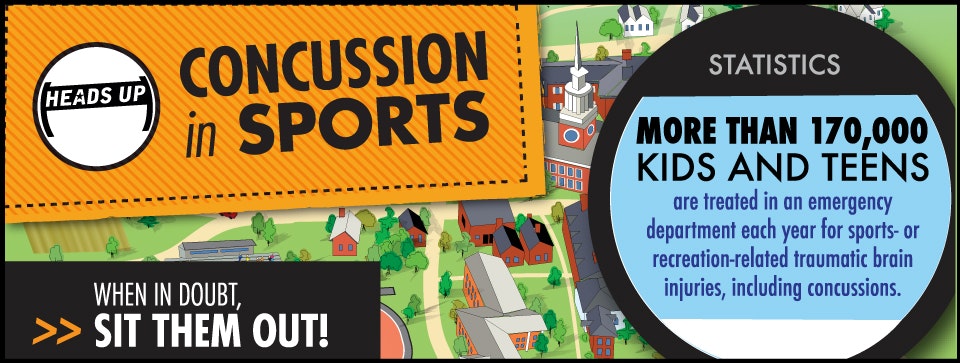Concussion & SCA
Concussion and Sudden Cardiac Arrest Information

Click here to review CARD's Concussion Awareness Form
Concussion Training & Education
Concussion Resources
| CONCUSSION INFORMATION | |
|---|---|
| What is an concussion? | A concussion occurs when an athlete receives a traumatic force to the head or upper body that causes the brain to shake inside of the skull. This may cause a change in mental statuses such as loss of consciousness, amnesia, disorientation, confusion, or mental fogginess. |
| Facts & Statistics | 1.6 to 3.8 million concussions occur each year. 34% of concussions occur during practice and 65% occur during competition. Effects of concussions are cumulative in athletes who return to play before complete recovery. The younger the athlete, the longer the recovery time will be. Second impact syndrome is rare but preventable. Terms such as "bell ringers," "dings," or grading of concussions are no longer used. |
| Signs & Symptoms of a Concussion | Appears dazed, headache, disoriented, nausea, confused, balance problems, unsure of score/opponent, double or blurry vision, answers are slow, sensitive to light, personality or mood change, feeling sluggish, loss of memory before the hit, feeling foggy, loss of memory after hit, change in sleep pattern, loss of consciousness, cognitive changes. |
| What do I do if there is a suspected concussion? | If a concussion is suspected, the player should not be allowed to continue with the current activity until properly evaluated by a physician. When in doubt, sit them out. |
| When can a player play again? | All players must follow a "Return to Play" protocol upon the clearance of a physician. |

Sudden Cardiac Arrest
Sudden Cardiac Arrest Resources
- NFHS Sudden Cardiac Arrest Course (Free)
- Sudden Cardiac Arrest Prevention Training for Coaches
- Sudden Cardiac Arrest Prevention Training for Athletic Trainers
- SCA Flyer / SCA Flyer (Spanish)
- SCA Fact Sheet / SCA Fact Sheet (Spanish)
- Find Fact Sheets in More Languages
- Sideline Action Plan
- Coach/Sports Officials SCA Fact Sheet
- Cardiac Chain of Survival
- SCA Warning Signs Poster / SCA Warning Signs Poster (Spanish)
- Cardiac Chain of Survival Poster
- SCA Prevention Videos for Parents, Coaches, and Team Meetings
- Free SCA Prevention Resources Provided by the Eric Paredes Save A Life Foundation
| SUDDEN CARDIAC ARREST (SCA) INFORMATION | |
|---|---|
| What Is Sudden Cardiac Arrest? | Sudden Cardiac Arrest (SCA) is not a heart attack. It’s an abnormality in the heart’s electrical system that abruptly stops the heartbeat. It's caused by an undetected congenital or genetic heart condition. |
| Facts & Statistics | Up to 72% of sudden cardiac arrests are preceded by symptoms, which often go unrecognized, which is why parents and student-athletes thoughtfully completing sports clearance packets and health history forms together is so critical. SCA is also the leading cause of death on school campuses, with 1 in 300 youth having an undetected heart condition that puts them at risk for SCA. |
| Signs & Symptoms of Sudden Cardiac Arrest | Although SCA happens unexpectedly, some people may have signs or symptoms, such as fainting (#1 symptom of a potential heart condition), chest pain, shortness of breath, racing or fluttering of heartbeat, dizziness, or lightheadedness, extreme fatigue. These symptoms can be unclear and confusing in athletes. Often, people confuse these warning signs with physical exhaustion. |
| What do I do if there is a suspected Sudden Cardiac Arrest? | Time is critical. If not properly treated within minutes, SCA is fatal in 92% of cases. 1) Recognize SCA: the victim is collapsed, unresponsive, and not breathing- don't be fooled by gasping, gurgling, seizure-like activity. 2) Call 9-1-1. The operator can instruct you in CPR. 3) Push. Start hand only CPR immediately. Push hard and fast in the center of the chest. 4) If available, shock with an AED. Any bystander can use the AED. Follow the step-by-step audio instructions. |
